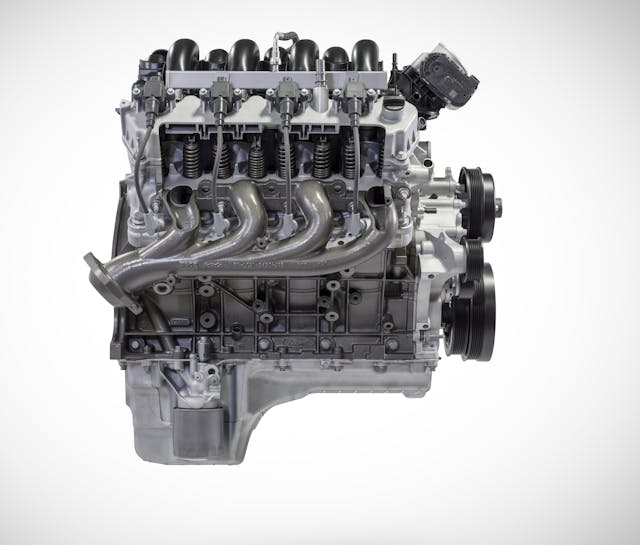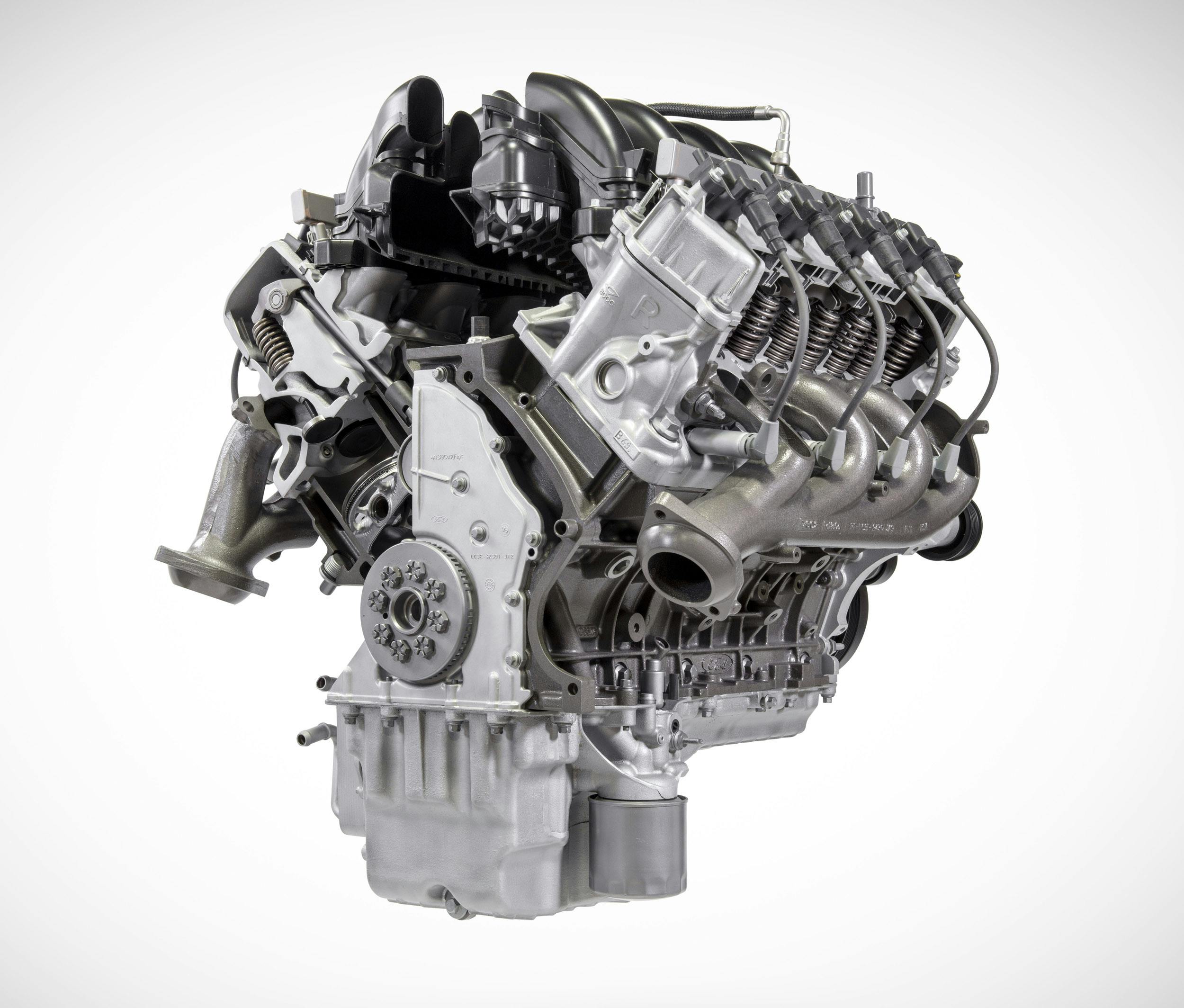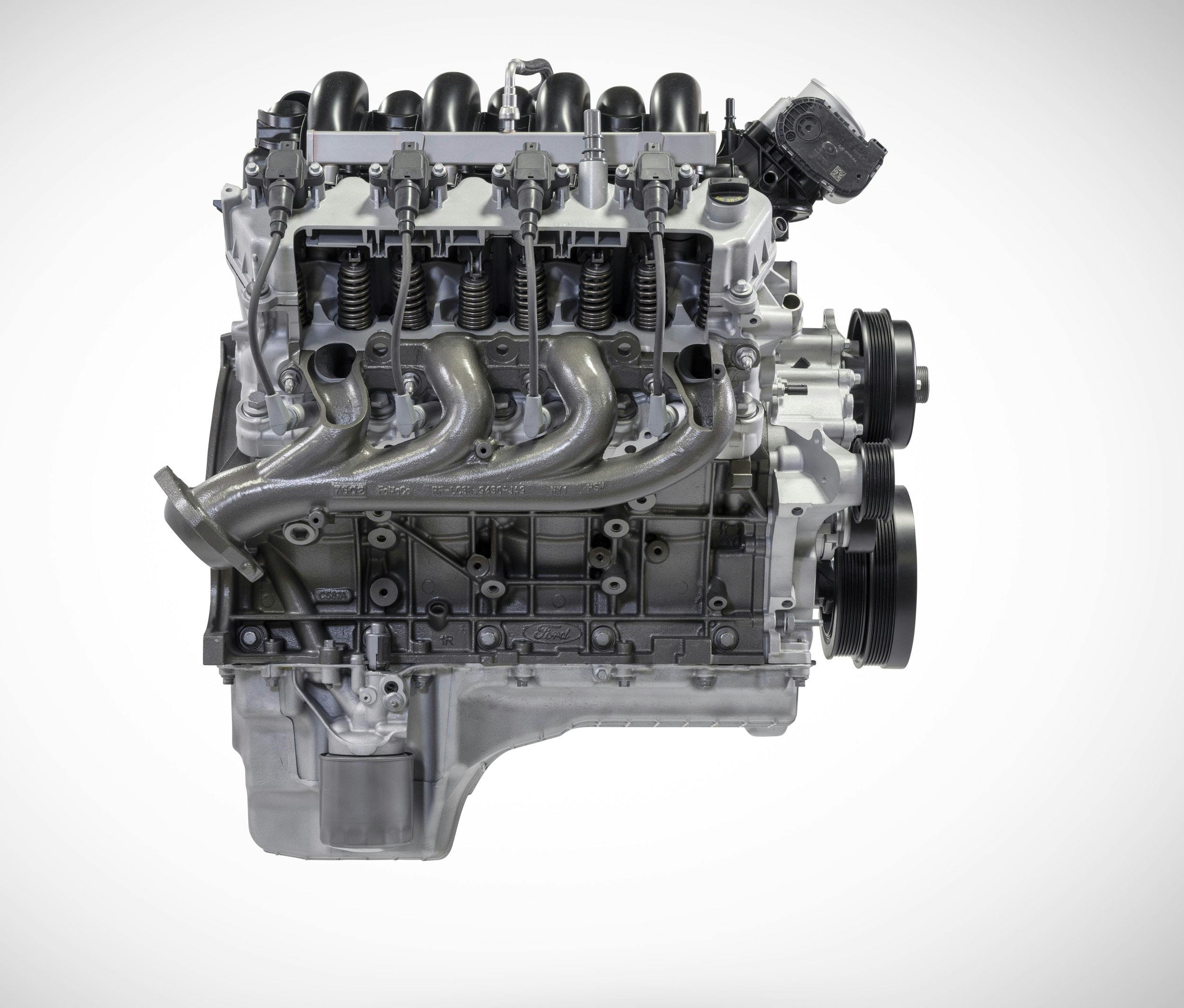Media | Articles
Ford Performance selling Super Duty “Godzilla” 7.3-liter V-8 as crate engine
Ever since Ford announced the 7.3-liter pushrod V-8 for the then-new 2019 line of Super Duty trucks, Blue Oval faithful have been dreaming of the potential housed in Ford’s only big-inch motor. The brand that has built its reputation on small, overhead-cam V-8s over the past 30 years departed from the typical recipe in order to satiate the demands of Ford’s heavy-duty workhorses in the F-250-and-higher chassis. In its factory spec, the single cammer churns up 430 hp at 5500 rpm and 475 lb-ft at 4000 rpm—most of which is available just as the motor wakes up from its idle speed.
These same numbers carry over into Ford’s newly released 7.3-liter crate engine, placing the showroom-stock engine high up on the food chain of Ford’s crate engines for a few bucks less than some of the racier Windsor small-block offerings. In fact, when compared to the only Coyote crate engine producing more horsepower (460 hp with 420 lb-ft), it’s cheaper by nearly $1,000—and the cheapest 5-point-oh you can order from the parts counter of any Ford dealer is still nearly $500 more expensive than the 7.3 liter “Godzilla” crate engine. At $8150, they almost want you to take one of these modern big blocks home. So what do you get for your fistful of dollars?
Unlike the smaller 5.0-liter and 6.2-liter V-8s found in the Mustang and F-series, the 7.3-liter makes use of a cam-in-block, pushrod-activated valvetrain with a single cam phaser to adjust valve timing. Despite this seemingly backwards step in engine technology, the compact valvetrain allowed Ford to build its largest displacement V-8 since the death of the 460-cu-in big-block while still fitting between the fenders of their common pickups, a trick that becomes harder to pull off with the increased height and overall width of an overhead cam cylinder head. It was engineered to directly replace the aging Modular-based 6.8 liter V-10 that had served since 1997 as Ford’s big-torque diesel alternative and was truly the culmination of Ford’s long history of engine design.
The composite manifold feeds steeply-angled intake ports designed by the wizard who carved out the 5.0 and 5.2 Coyote/Voodoo cylinder heads, well known for their breathing abilities as a necessary means to compete with the larger displacement competition from FCA and GM. A squint under the valve covers shows that the progressive rate beehive springs have a suspiciously tall height, perfect for a high-lift cam. Unlike the typical 32-valve affair, two valves per cylinder feed 4.22-inch-wide bores, which combined with the 3.976-inch stroke, brings the final displacement to 444.89 cubic inches, or the more marketable 7.3-liter designation. Out of the box, the factory pistons—which attribute much of their design to Ford’s twin-turbo EcoBoost engines according to an interview in Hot Rod—are backed by oil squirters to cool the crown of the piston under heavy loads… or tons of boost, whichever, y’know? The forged crank is supported by cross-bolted main caps, ensuring good rigidity under extreme demands. Its iron block is also slightly larger than the 6.2 “Boss,” with an additional one-hundredth of an inch between the cylinder centers for a final measurement of 4.54 inches. Despite this, the overall engine size is narrower than even the Coyote by nearly half a foot thanks to the compact pushrod valvetrain.
While there are a couple of folks out there playing with them already, the biggest negative to the 7.3-liter “Godzilla” motor has been availability. The engine has simply been too new to fall into second-hand homes. Few wrecked trucks have been seen at insurance auctions, and the fleet of 2019-and-up Super Duties hasn’t yet aged out of service into local junkyards. With its compact dimensions, massive lung capacity, and too-good-to-be-true price for a mail-order engine, what’s not to love here? Our sources say, “there was much rejoicing.”
Marketplace
Buy and sell classics with confidence







